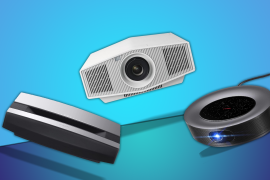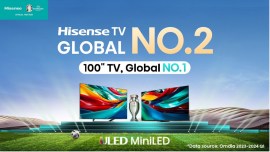JVC LX-NZ30 review: big screen, bigger brightness
Legendary projector know-how at a more affordable price
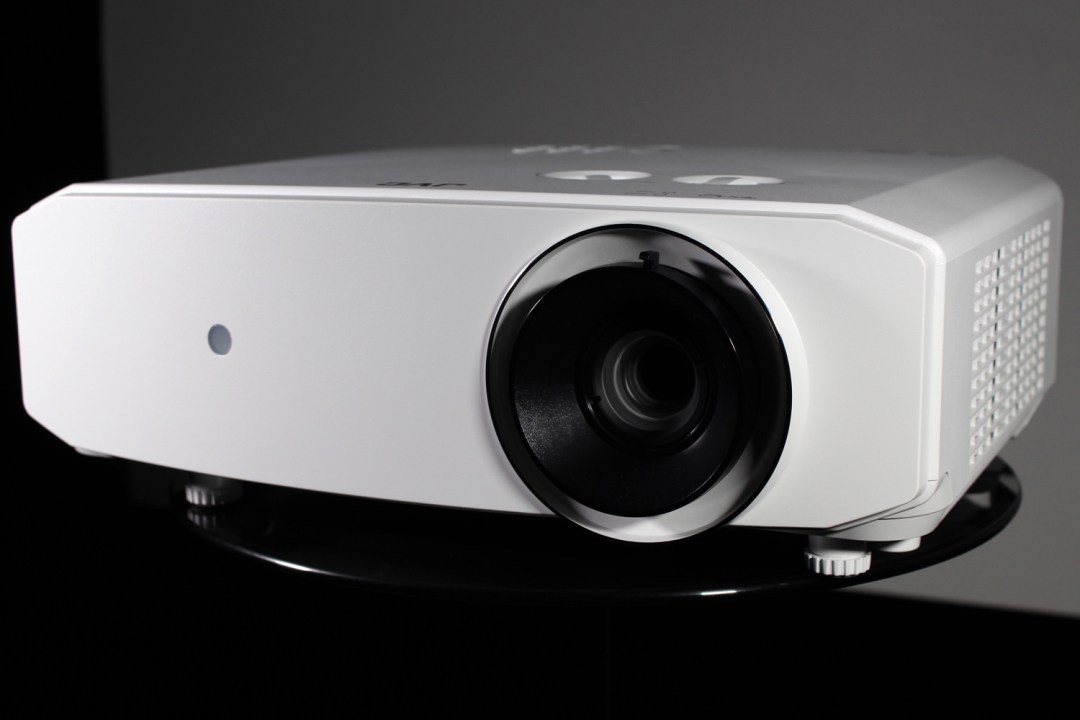
JVC has a deserved reputation for top-tier home theatre kit – the only problem is it tends to be a bit pricey. That makes the LX-NZ30 a cause for celebration: this new laser-powered 4K DLP beamer offers JVC’s expertise without the painful price premium.
It uses a DLP chipset rather than JVC’s own D-ILA technology to keep costs down, but also adds the BLU-Escent laser light source found further up the range. That means an eye-scorching 3300 lumens of brightness, and a claimed lifespan of 20,000 hours. Add in JVC’s class-leading HDR tone-mapping, plus slick 1080p/240Hz low-latency gaming, and you have a projector that’s ideal for big-screen movie nights and marathon gaming sessions.
At $3,499/£3,799 the LX-NZ30 is the cheapest entry-point into JVC’s projector line-up by a considerable margin. The DLA-NP5 lamp-based projector costs $5,999/£7,499, while the high-end JVC DLA-NZ7 laser-powered beamer will set you back an eye-watering $10,999/£11,499. It sheds a few features as a result, but should compare favourably to DLP- and LCD-based rivals from Optoma, Epson and the rest.
Design & installation: lifestyle friendly


The diminutive LX-NZ30 is dwarfed by its more expensive siblings, but that’s not necessarily a bad thing. Thanks to the smaller and lighter chassis, plus a choice of black or white finishes, It’s considerably easier to move around and much more lifestyle-friendly.
Installation is a piece of cake, with a choice of stand or ceiling mounting. The up/down, left/right, zoom, and focus lens controls are only manual, but there’s plenty of vertical and horizontal shift, making the JVC flexible to fit. The 1.6x zoom will create a 100in image from a distance of 3-4.8m, and if you have a larger room you can beam a pin-sharp image up to 200in. There are also adjustable feet on the bottom for levelling the projector.
The only tricky bit is precisely focusing the image. Top tip: if you turn off e-shift and have one person stand near the screen to pixel-peep while someone else manually adjusts the focus, you can get it spot-on. Just remember to turn the e-shift back on afterwards, otherwise the LX-NZ30 can’t display a 4K signal.
One of the advantages of a single-chip DLP projector is a super-sharp image, but unfortunately one of the disadvantages is ‘rainbow’ artefacts caused by the built-in colour wheel. This won’t affect everyone, but if you suffer from this type of colour-fringing the LX-NZ30 isn’t a great choice, and you should probably consider a three-chip LCD Epson instead.
The colour wheel wizzing around makes a high-pitched noise, although the fans are also fairly loud on this projector because of the laser’s massive 3300 lumens of light output. It’s best not to put the LX-NZ30 too close to your head, but on the plus side all this brightness means you can use it in a room with white walls or a degree of ambient light.
The lens is offset to the right as you face the projector, with the air intake vent also on the right side of the chassis, and the exhaust port over on the left. There are some basic controls on top, and the included remote is sensibly laid-out, with a backlight for using in the dark.
At the rear are the connections, with two HDCP 2.3 compatible HDMI 2.0 inputs, a USB-C port, a USB-A power supply, a DisplayPort input (handy for PCs), RS-232 and LAN connectors for serial control, and a 12V trigger for activating a motorised screen. The lack of HDMI 2.1 inputs means the projector is limited to 4K/60Hz, but it can support 1080p Full HD gaming at up 240Hz.
Features: simple but effective



The JVC LX-NZ30 supports 3840×2160 UHD content, but the 0.47in DMD chip isn’t native 4K. It’s actually 1080p, but thanks to a 240Hz refresh rate the image can be flashed four times to build up a 4K/60Hz image indistinguishable from native 4K. The e-shift control turns this feature on and off; using the latter makes focusing easier because you can actually see each pixel, but the rest of time you should leave it on to enjoy 4K.
The BLU-Escent laser light source isn’t just super-bright, but also has a claimed lifespan of 20,000 hours. You could easily watch a film a day for the next ten years without worrying about changing your projector. It also has better consistency and none of the dimming associated with traditional lamp-based models.
The LX-NZ30 supports HDR10 and HLG (hybrid log-gamma) high dynamic range content, and thanks to JVC’s class-leading wizardry in this area the beamer promises to deliver a superior performance. The Auto Tone Mapping adjusts the HDR experience based on metadata in HDR content, ensuring the projector delivers deep blacks that are free of crush, plus bright highlights that don’t lose detail due to clipping. A lack of HDMI 2.1 inputs precludes support for HDR10+ and the benefits of its dynamic metadata, though.
Manual lens controls don’t allow for lens memories either, which will disappoint anyone using a wider aspect ratio screen. If either of these features is important, the Epson EH-LS11000W is a better bet. Sadly there’s no 3D support, which is a shame because the super-fast response times of DLP projectors really lend them to the format.
Performance: dynamic HDR
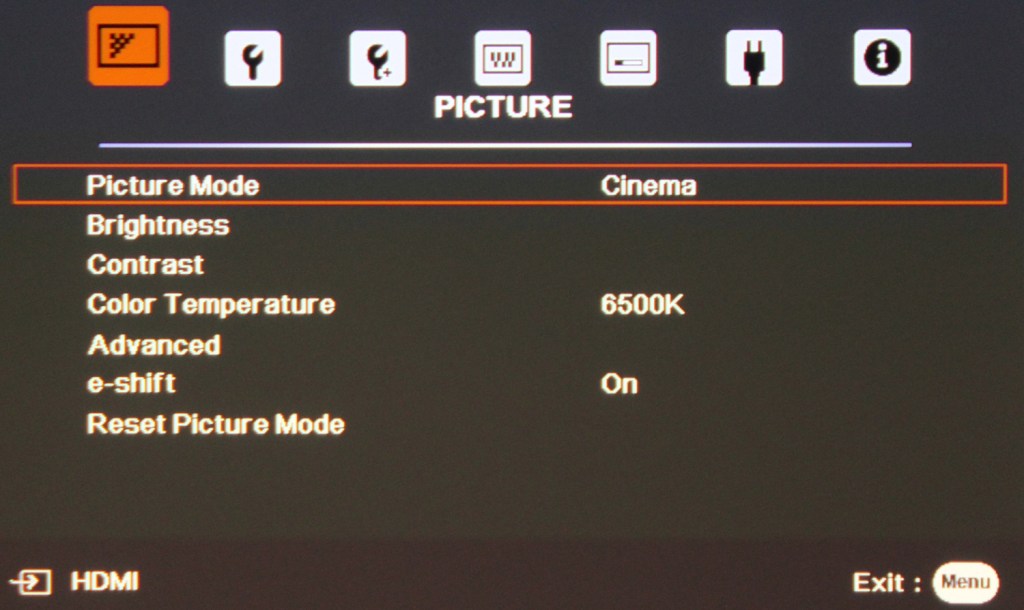
The JVC LX-NZ30 impresses right out of the gate with its bright and punchy pictures. The sharpness of the single-chip design and the effectiveness of the e-shift technology combine to render wonderfully detailed images, and the upscaling and processing benefit from JVC’s extensive projector expertise.
The laser light source is extremely bright, and depending on the size of your screen and the amount of ambient light, you may need to reduce the level of brightness using the light source settings in the menu. There’s certainly sufficient luminance to produce SDR and especially HDR images that dazzle.
There are a number of picture modes, with Cinema the best choice for darker rooms, although if there’s some ambient light the Natural setting comes in handy. Both these modes retain a pleasing level of image accuracy, ensuring you’re seeing what the content creator’s intended. While the LX-NZ30 is bright, the darker you can make the room, the better your experience.
HDR is simply excellent. JVC’s Auto Tone Mapping feature is able to get the best out of this type of content, ensuring there’s detail in both the shadows and specular highlights. Colour reproduction is also good, and when combined with the inherent brightness HDR appears very dynamic, with plenty of visual ‘pop’.
If there’s one area where DLP beamers are particularly good it’s motion handling, and the LX-NZ30 is no exception. There’s a pleasing smoothness to movement, with movies retaining that all-important film-like look but also appearing free of judder and other artefacts that affect less capable display technologies.
Conversely DLP projectors struggle when it comes to blacks, and the LX-NZ30 is no exception, with its blacks appearing more dark grey and thus robbing the contrast of some of its impact. This is admittedly less of an issue with white walls, where any reflected light will wash out the contrast anyway.
What all this basically means is that if you put on a film like The Greatest Showman or Guardian of the Galaxy Vol.2, you’ll be rewarded with a dazzling display of detailed 4K imagery, replete with rich colours and accurately rendered highlights.
Where the LX-NZ30 tends to struggle is with a darker film like The Batman, with its numerous nighttime scenes bathed in shadows. Of course any projector at this price will struggle with this, and at least the JVC has peerless tone-mapping to get the most out of challenging material.
Gaming: lightning-fast responses
The JVC LX-NZ30 isn’t just a winner with movies, it’s also a barnstorming performer when it comes to gaming. For a start the superb motion handling ensures buttery smooth movement with 4K games at 60Hz, even if the lack of HDMI 2.1 precludes gaming at 4K/120Hz. The ability to go up to 240Hz at 1080p is essential for uncompromising gamers, and backed up by some incredibly low latency measurements.
JVC’s engineers have reduced lag times to blink-and-you’ll-miss-it levels, hitting 25ms for 4K/60Hz and 1080p/60Hz, 12.5ms for 1080p/120Hz, and a staggering 6.25ms for 1080p/240Hz. These numbers will please even the most demanding gamer, with the promise of smooth low-lag images on even the biggest screens.
Select the Game preset, or turn on the low latency mode in another picture preset, and you’re rewarded with images that are sharp, detailed, colourful and expertly tone-mapped, combined with a highly responsive and fantastical immersive gaming experience.
JVC LX-NZ30 verdict
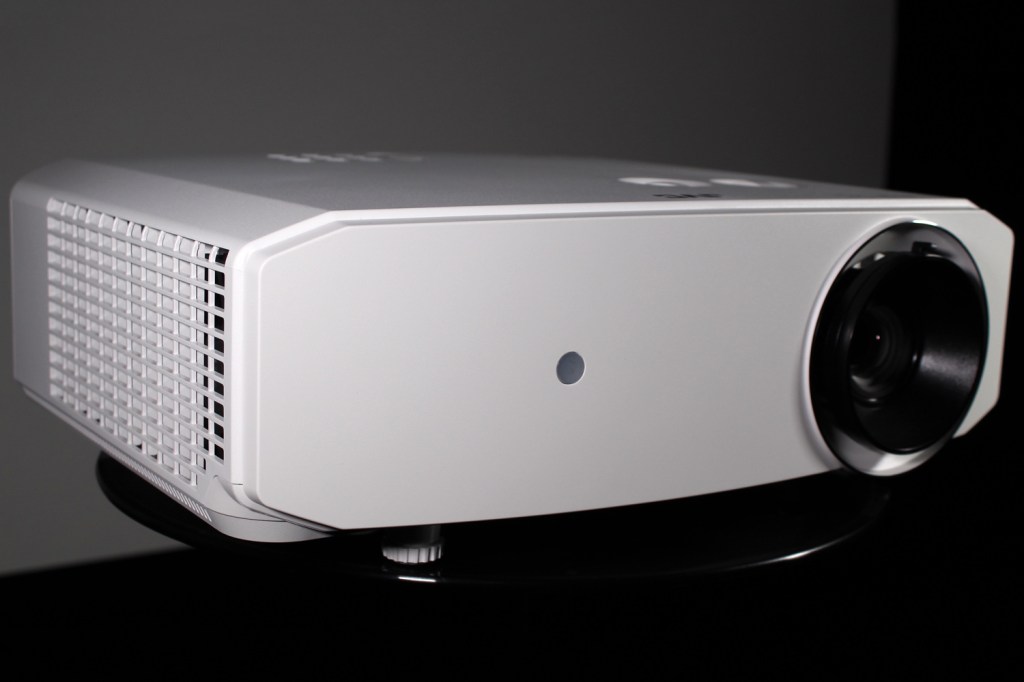
The JVC LX-NZ30 is a capable projector with big and bright 4K images that enjoy exceptional HDR tone-mapping, thanks to proprietary processing. It has all the usual strengths of a DLP beamer, such as fast response times and superb motion handling, but also weaknesses like poor blacks and the possibility of rainbows.
The LX-NZ30 is certainly well-spec’d compared to similarly-priced DLP projectors, and the laser light source promises bright and stable pictures for years to come. Lack of 3D is disappointing but not surprising these days, and there’s no lens memory or HDMI 2.1. So if the latter two matter, the Epson EH-LS11000W is your best bet.
If all you want is a cheap and cheerful DLP projector for the occasional movie night or the big match, there are plenty of options around the one to two grand mark, but if you want a more refined beamer that delivers excellent 4K HDR and the smoothest gaming around, the LX-NZ30 promises maximum big-screen impact.
Stuff Says…
This super-bright projector benefits from JVC’s HDR expertise and incredibly low latency to deliver big-screen movies and games.
Good Stuff
Sharp and detailed image with excellent HDR
Super-bright, long-life laser light source
Very low latency for a projector
Bad Stuff
Black levels could be better
Rainbow effect could be a problem
Fans are quite noisy
JVC LX-NZ30 technical specifications
| Projection type | Single-chip DLP |
| Light source | Laser (20,000hrs claimed lifespan) |
| Resolution | 3840×2160 |
| Brightness | 3300 lumens |
| Connectivity | 2x HDMI 2.0, DisplayPort, USB-C, Ethernet |
| HDR formats | HDR10, HLG |
| Dimensions | 405x146x341mm, 5.9kg |

